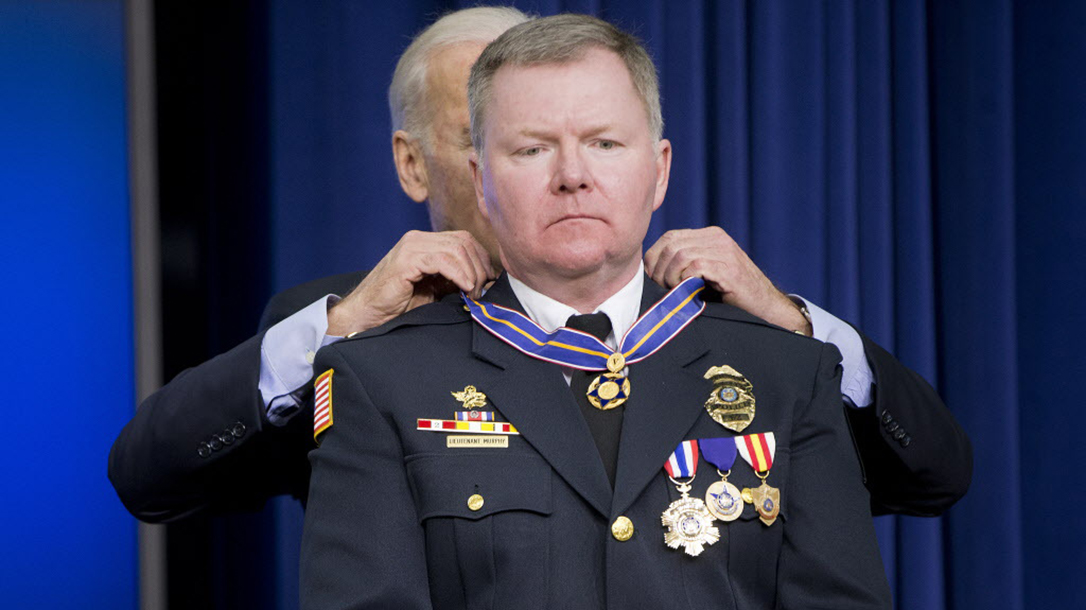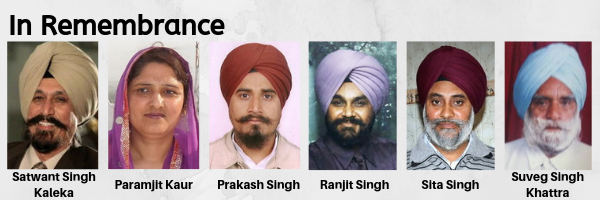10 years ago, Lieutenant Brian Murphy, a 22-year veteran of the Oak Creek, Wisconsin Police Department, had never really engaged with the Sikh community.
“We knew they were there. But the Sikh community tends to stay within itself,” Murphy, who has since retired, told India Currents in an interview. He had patrolled the Oak Creek gurdwara, but had never gone inside, nor engaged with the congregants.
But all that changed on ten years ago today, on Aug. 5, 2012, as avowed neo-Nazi Wade Michael Page stormed the gurdwara during Sunday morning prayers. The shooter killed six people during his rampage, before killing himself as police officers intervened.
Page was affiliated with the Hammerskins Nation, one of the oldest, most violent and most dominant skinhead groups in the US. After the massacre, Hammerskins Nation sought to distance itself from Page.
Among those who were killed was temple President Satwant Singh Kaleka. Satwant engaged with Page, holding him back with a knife to stop him from entering the kitchen, where women — and their children — were cooking langaar, the traditional feast served free to all daily at the gurdwara.
Others killed in the tragedy included Paramjit Kaur, Suveg Singh Khattra, Prakash Singh, Ranjit Singh, and Sita Singh.
Murphy was one of the first responders at the scene of the horrific massacre. “Initially, the call came in as a fight. I thought it was just two people not getting along,” he said.
The police officer got to the site in less than two minutes, and immediately determined that there was at least one active shooter at the scene. He saw two deceased bodies, one lying on top of the other, in an obvious attempt to shield him from bullets. The victims were later identified as brothers Sita and Ranjit Singh, both immigrants from Punjab who worked at the temple.
10 seconds later, Page came out of the temple. “It looked like he was running away. I called for him to stop. He drew his gun. We both shot. I missed that tough shot,” said Murphy, adding that he has mulled that single moment many times in his head.
“He didn’t even look at me as he shot me in the face. I have wondered how he made that shot, running, and essentially shooting backwards.”
“He was never upset. He showed no emotion as he fired. These people have practiced this over and over in their heads. They have normalized it. So when they are actively shooting, it is methodical,” said Murphy.
The first shot hit Murphy in the chin. The second bullet tore through his voice-box and larynx before lodging itself in his neck, where it still remains to this day. It’s still stuck there and it’ll be there forever.” Murphy also has a bullet lodged in his skull. He was wearing a body vest, which he believes kept him alive
Page continued to shoot, stopping only to reload. “I kept thinking, if I could just get back to the squad car, I could run him over.”
Another officer, Savan Lenda, arrived at the scene, and shot Page down. Murphy predicted that Wade would have bled out, but the shooter took the gun to himself. “I am glad he did. There were children witnessing the scene who would have had to testify,” further intensifying their trauma, he said.
Murphy was transported to a hospital. “I remember waking up in the ICU. I asked my wife: ‘Am I going to die?’ She said no. And I knew I was going to be okay.”
It took seven months for Murphy to recover. During that time, the Sikh community from around the world poured in prayers, tributes, and money to help with rehabilitation. One such donation came from the “peach king of California,” Didar Singh Bains and Dr. Balwinder S. Malhi, who collectively donated $100,000.
Murphy was hailed a hero. In 2015, the Justice Department awarded the Public Safety Officer Medal of Valor to Murphy and Lenda. Joe Biden, who was then Vice President in the Obama Administration, conferred the honors.
“I am as much a part of the Sikh community as anyone else. Everyone immediately embraced not only me, but also my family. I wouldn’t have imagined it in 1,000 years,” said the retired officer, who has now become an integral component in the movement against race-based hate.
“I go around the country talking to people about Sikhism. People equate Sikhs with terrorism because of their turbans and beards. I ask people to talk to Sikhs, to find out whether they have anything in common. Because we all have something in common. It is an educational process,” said Murphy.
“We are all so alienated from each other. People don’t talk to each other anymore. People are just looking at their phones.”
Social media has played a huge role in social isolation,” believes Murphy. “We can spew hate freely against people we can’t see,” he said. “When we first went into lockdown during the Covid-19 pandemic, I told my wife: ‘violence is going to go through the roof.’”
“We need to know our neighbors, say hello to people on the street, help them with their packages. When someone reaches out and says: ‘you got a minute?’ we need to respond. They might be on the cusp of doing something that could be prevented by just engaging with another human being,” said Murphy.
This resource is supported in whole or in part by funding provided by the State of California, administered by the California State Library in partnership with the California Department of Social Services and the California Commission on Asian and Pacific Islander American Affairs as part of the Stop the Hate program. To report a hate incident or hate crime and get support, go to CA vs Hate.






